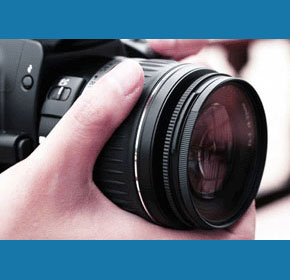
Covert photography is a very important skill for virtually all types of professional investigators. Traditional detectives who specialize in surveillance work must be experts are photographing and videotaping their subjects without being seen or suspected. However, in almost all investigation niches, photography in less than ideal circumstances may be needed, in order to document case activity.
While anyone can take a picture or video, overcoming the common concerns associated with detective work can make this particular task a real challenge.
This essay will help professional and aspiring investigative operatives to improve their skills at taking pictures, without being seen.
Definition of Covert Photography
Covert means that the pictures or video must be shot without the investigator making their presence known to the subject. In some cases, this can also mean that the investigator can not show themselves at all to the general public and may have to shoot the target from a completely hidden vantage point. Therefore, the ability to photograph covertly is actually a set of skills, far more than a single aptitude.
The detective must be able to access the situation, find an ideal location to film the subject, actually document the subject’s actions and remain hidden the entire time, despite the presence of onlookers, possibly inclement weather and other complications, such as darkness or a fast moving subject.
Undercover Photography Tactics
Detectives must be incredibly familiar with their equipment and should be well-versed in shooting photos and videos without taking more time or effort than absolutely necessary. If an investigator can learn to shoot pictures with one hand or while moving themselves, all the better. Skill goes a long way, but even investigators without expertise can still get the job done, if they invest in some good private detective equipment.
Hidden cameras make covert surveillance much easier. However, these devices may not be useable in every scenario. Investing in some long-range photo gear is also useful, since high-magnification lenses will give the detective more options, when it come to finding ideal vantage points to shoot from, without being seen.
Covert Photography Skills
In the course of my own investigation career, I have shot countless pictures and video sequences, documenting everything from accident scenes to subject activities. I have shot photos and video in the dark, in public, without drawing attention to myself and while driving. It has been a real challenge in many of these cases, but the job got done.
One of the main problems I witness is the simple fact that many detectives do not test their gear before using it, or simply do not really know how to use all of the features they require for a particular assignment. Often, there is just one chance to get it right, and that type of pressure is not a good time for any of the following to occur:
Opps, no batteries!
Opps, no film, tape or memory left!
How do I use this feature again?
Oh no, the camera does not work!
What am I supposed to be doing?
Make sure to avoid these common pitfalls by practicing with your equipment regularly and immediately before actually working with it in the field. Bring extras of everything, including batteries and memory media and even take along a back-up camera, just to be safe.


